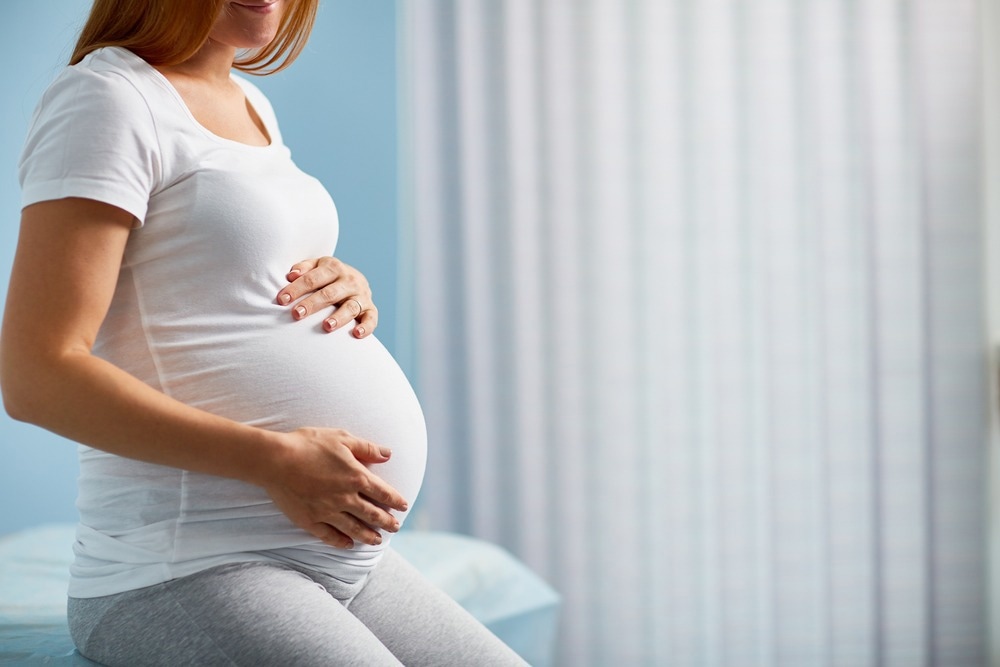In a recent study published in JAMA Psychiatry, researchers investigated the relationship between prenatal maternal inflammation (PNMI) and depressive symptoms in their adolescent offspring.
 Study: Sex-Specific Pathways From Prenatal Maternal Inflammation to Adolescent Depressive Symptoms. Image Credit: Pressmaster/Shutterstock.com
Study: Sex-Specific Pathways From Prenatal Maternal Inflammation to Adolescent Depressive Symptoms. Image Credit: Pressmaster/Shutterstock.com
Background
PNMI has a crucial role in the development of neuropsychiatric diseases in children. Adversities during pregnancy, such as infection and psychological stress, can influence fetal neurodevelopment and cause obstetric difficulties. PNMI is associated with depressive disorders in adulthood and childhood symptoms. However, the relationship between PNMI and adolescent depression is unclear.
About the study
In the present observational study, researchers investigated whether PNMI biomarker levels were associated with depression symptoms in their adolescent children. They also examined the impact of gestational duration, offspring gender, and childhood depressive disorders on the associations.
The study included the Child Health and Development Studies (CHDS) cohort, recruiting maternal obstetric care recipients registered with the Kaiser Foundation Health Plan (KFHP) system in the Alameda County of California (19,044 live births) from June 1959 to September 1966. The team obtained pregnancy data, maternal sera, and offspring depressive symptom data in childhood (n=3,737, nine to 11 years of age) and adolescence (n = 2,020, 15 to 17 years).
The team included 674 mother-offspring pairs with accessible maternal PNMI biomarkers during the first and second pregnancy trimesters and adolescence depression data at follow-up. They analyzed data from March 2020 to June 2023. The primary study outcome measures were self-reported psychiatric symptoms in adolescent offspring at follow-up.
The study exposures were the levels of four maternal inflammation biomarkers such as interleukin-1 receptor antagonist (IL-1RA), IL-6, IL-8, and tumor necrosis factor receptor-II (TNFR2) in the initial and subsequent pregnancy trimesters, measured using enzyme-linked immunosorbent assays (ELISA). At follow-up, mothers completed interviews and filled out questionnaires, and offspring completed interviews in adolescence. The team examined items representing internalizing (such as depression and anxiety) and externalizing symptoms (such as conduct problems) as continuous variables.
The team performed mediation analyses to investigate whether childhood depressive symptoms mediated the associations. Further, they evaluated the impacts of offspring gender and PNMI timing in the associations. The researchers collected demographic data from maternal reports at birth. They used maternal educational attainment as a proxy variable for socioeconomic status and postnatal adversity and examined maternal age at offspring delivery and race as potential covariates. They excluded Asian individuals for sensitivity analyses.
Results
Among 674 mother-offspring dyads, the mean maternal age was 28 years, and 325 female and 350 male offspring. Maternal race, educational attainment, and offspring gender showed significant associations with childhood or adolescent depressive symptoms and one or more PNMI biomarkers and were covariables. Maternal concerns in childhood and maternal psychiatric symptoms in adolescence showed statistically significant associations with childhood or adolescent depressive symptoms but not PNMI biomarkers.
Complete data were available for 327 and 330 mother-offspring pairs in the first and second trimesters, respectively. In pairs with maternal PNMI biomarker data, the team examined differences between those with offspring depressive outcome data (n=674) and those without (n=63). Mothers retained in the sample had fewer pregnancies, higher IL-8 levels in the initial trimester, and a smaller percentage of Asian and black individuals.
Higher maternal IL-6 levels in the second pregnancy trimester showed significant associations with increased psychiatric symptoms in their offspring in adolescence. Childhood externalizing-type symptoms significantly regulated the relationship between IL-6 levels in the first trimester and depression among their male adolescent offspring, and childhood internalizing-type symptoms mediated associations between IL-1RA expression in the second trimester and adolescent depression among female offspring.
In the cohort study, elevated second-trimester IL-6 levels were related to increased psychiatric symptoms in adolescent offspring. Further, pediatric externalizing and internalizing symptoms were found to mediate sex-specific pathways from PNMI to offspring adolescence symptoms. Mothers self-reported marital, employment, financial, and health concerns at childhood follow-ups and depressive symptoms at adolescent follow-ups. The researchers performed linear regression modeling for analysis.
Conclusion
Overall, the study findings showed that PNMI is associated with adolescent depression and is influenced by fetal gender and exposure time. This research provides insight into the developmental pathways that increase the risk of depressive symptoms in children. The combination of environmental and genetic factors is crucial in estimating the risk for psychopathology.
Future research could identify intermediate phenotypes for early intervention, measure inflammation cooccurring with environmental-type stressors, examine the intersectional effects of demographic variables, and use multimodal assessments of maternal and offspring psychiatric symptomatology.